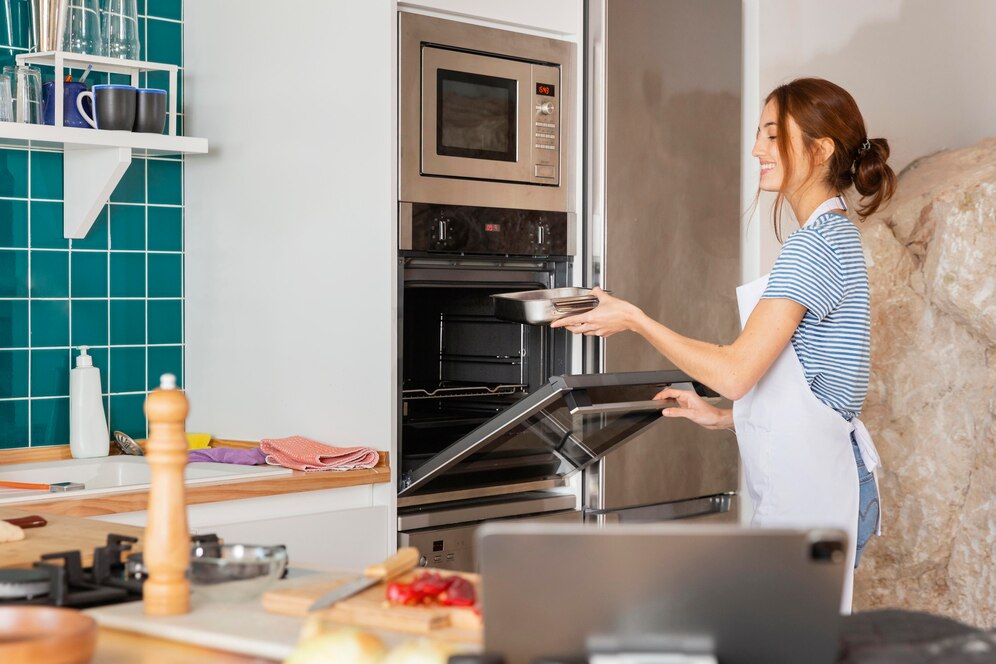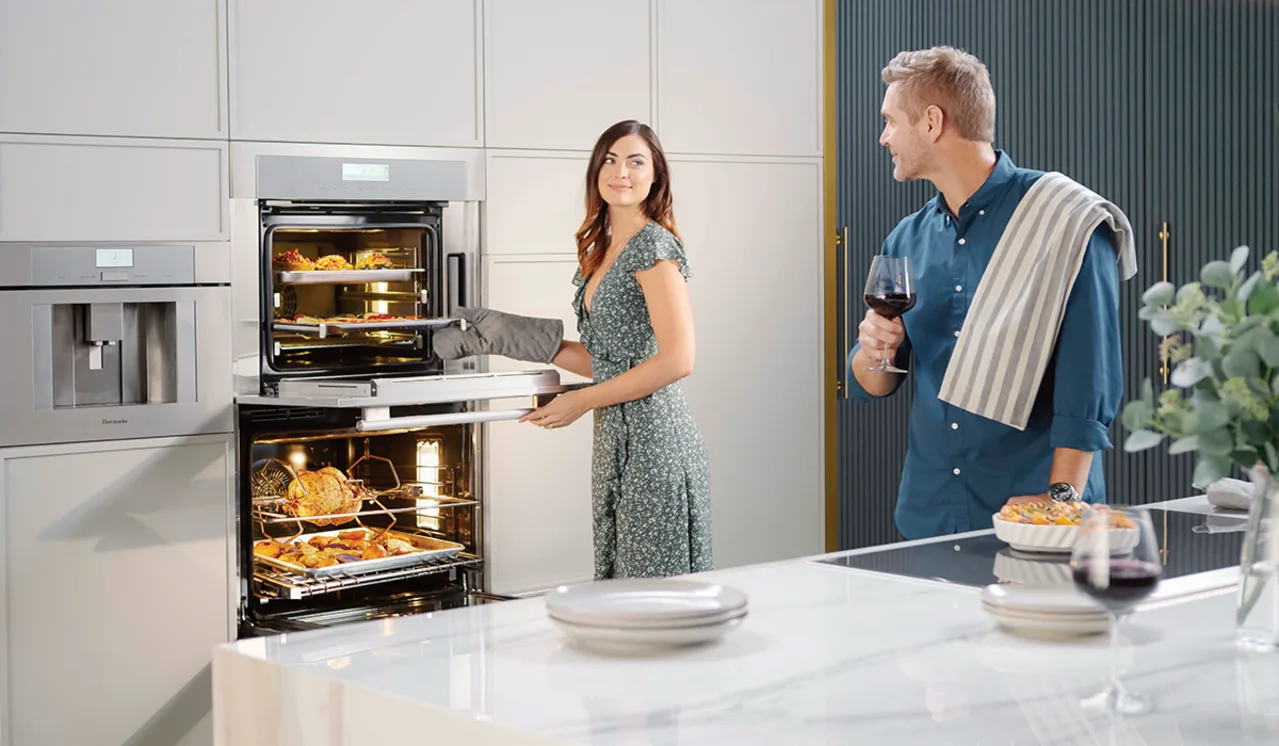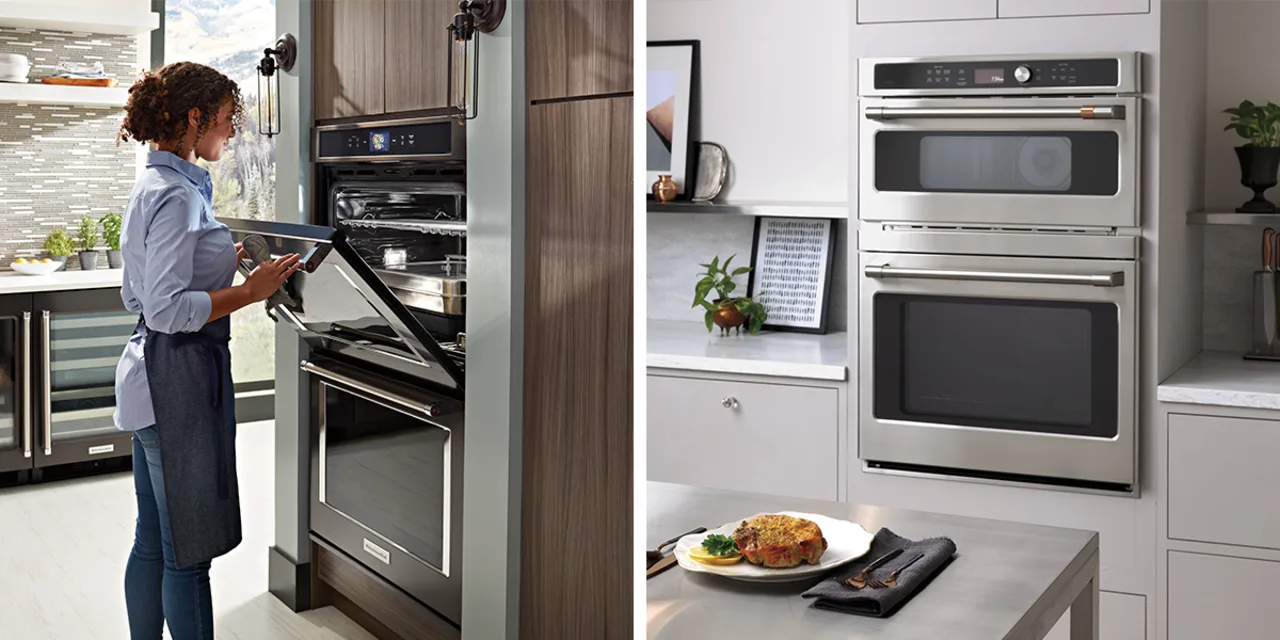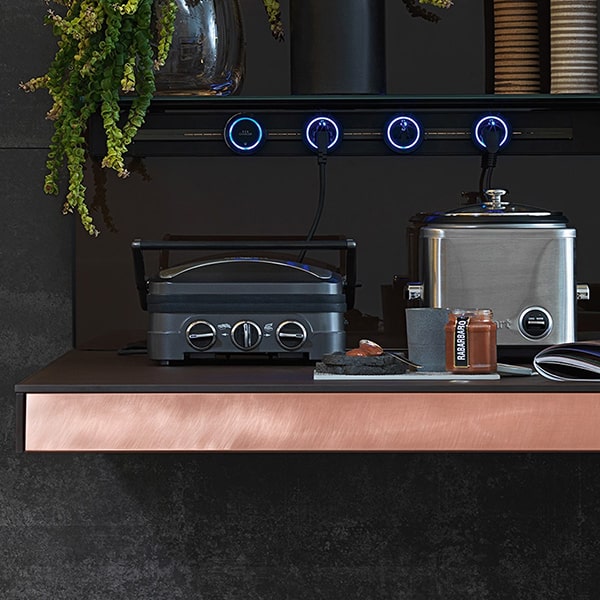Research & Planning Your Appliance Purchase
Introduction: Why 2025 Is the Year to Upgrade
Your home appliances aren’t just tools—they’re daily partners that shape your comfort, efficiency, and even your environmental footprint. As we enter 2025, rapid advances in energy efficiency, smart connectivity, and sustainable design make this the perfect moment to rethink old appliances and invest in next-generation models. Whether you’re replacing a single machine or equipping an entire home, careful research and planning will ensure you choose products that save you money, delight your senses, and last for years to come.
1. Assessing Your Needs: Lifestyle, Budget, and Space
1.1. Map Your Daily Routines
-
Cooking & Dining: Do you entertain often? Cook daily from scratch or lean on ready-meals?
-
Laundry Habits: Family of five—high capacity washer needed. Single occupant—compact model suffices.
-
Cleaning Frequency: Pet owners might require robotic vacuums with advanced filtration.
1.2. Space Constraints & Layout
-
Kitchen Footprint: Standard 30″ width for most ranges; ensure clearances for doors and vents.
-
Utility Room Dimensions: Front-load washers need 27–30″ width and 4″ clearance behind.
-
Appliance “Work Triangle”: Oven–sink–fridge spacing impacts efficiency.
1.3. Aligning with Your Budget
-
Entry-Level: Basic functionality, lower upfront cost, moderate efficiency.
-
Mid-Range: Balanced features, smart connectivity, solid energy ratings.
-
Premium: Luxury finishes, advanced automation, top energy savings.

kitchen-appliances
2. Key Features to Look For in Modern Appliances
2.1. Smart Connectivity
-
Remote Monitoring & Control: Adjust settings via smartphone or voice assistant.
-
Predictive Maintenance Alerts: Early warnings for filter changes or water leaks.
2.2. Energy Efficiency & Performance
-
Variable-Speed Motors: Quieter operation and optimized power use.
-
Adaptive Cycles: Sensors that tailor run-times to load size/soil level.
2.3. Durability & Warranty
-
Stainless-Steel Drums & Interiors: Resists corrosion and staining.
-
Extended Warranties & Service Plans: Peace of mind for costly repairs.
2.4. User Experience & Accessibility
-
Intuitive Controls: Touchscreens, app integration, physical dials.
-
Ergonomic Design: Large door openings, adjustable racks, side-swing doors.
3. Sustainability & Energy Efficiency in 2025
Consumers increasingly demand appliances that reduce both carbon footprint and utility bills. Government incentives and rebates can offset initial costs.
| Energy Star Tier | Minimum Efficiency | Estimated Annual Savings |
|---|---|---|
| Standard | 10–15% above federal minimum | $20–$30 per year |
| Advanced | 25–30% above federal minimum | $50–$70 per year |
| Cutting-Edge | ≥ 40% above federal minimum with smart grid | $80–$120 per year |
Source: U.S. Department of Energy 2024.
Expert Insight
“Energy-efficient appliances pay for themselves over time through lower utility bills, and they help homeowners qualify for green rebates.”
— Dr. Lina Martens, Sustainable Tech Consultant

kitchen-appliances man and woman
4. Setting a Realistic Budget & Timeline
| Component | % of Appliance Budget | Notes |
|---|---|---|
| Appliance Purchase | 70–80% | Core cost—shop sales and rebates |
| Installation & Delivery | 10–15% | Professional hookup, old-unit removal |
| Permits & Inspections | 2–5% | Required for gas hookups or electrical upgrades |
| Contingency | 10% | Buffer for unexpected parts or labor |
Timeline Estimate
-
Week 1–2: Research, in-store demos, ordering
-
Week 3: Delivery scheduling & permit applications
-
Week 4: Installation, hookups, initial testing
-
Week 5: Final inspection & user training
5. Case Study: The Chen Family’s Kitchen Refresh
-
Profile: Urban family of four, cooking enthusiasts, energy-savvy.
-
Goals: Replace 20-year-old range and dishwasher with high-efficiency, connected models.
-
Choices: 30″ induction cooktop with smart pot detection; dishwasher with leak sensors.
-
Invested: $6,500 total (appliances + installation + permit).
-
Outcome: 35% lower energy use, 25% faster wash/dry cycles, remote preheat and cycle start.
“We cook meals daily; the smart range means our son can preheat on his way home—huge time-saver!”
— Arjun Chen, Homeowner
Call to Action
Having a clear roadmap—defining needs, researching features, budgeting wisely, and learning from real-world examples—sets you up for a seamless appliance upgrade in 2025. In Part 2, we’ll dive into selecting top brands, comparing key models, and navigating sales and rebates to maximize value.
Brand Comparisons & Best Buys

kitchen-appliances a housewife using them
silver
Navigating the Appliance Marketplace
With your needs defined and budget set, the next step is finding the right brand and model. In 2025, major manufacturers offer a wide array of features, price points, and reliability records. This section will help you cut through the noise by comparing top brands, highlighting standout models, and revealing how to leverage sales, rebates, and financing to get the best value.
1. Comparing the Top 5 Appliance Brands
Below is a comparison of leading brands in key categories—refrigerators, ranges, dishwashers, washers/dryers, and smart home integration.
| Category | Brand | Key Strengths | Starting Price | Warranty |
|---|---|---|---|---|
| Refrigerators | Samsung | Innovative flex-zone drawers, Family Hub smart screen | $1,800 | 1 year parts & labor |
| LG | Inverter compressors, ThinQ app control | $1,600 | 1 year parts, 10 years on compressor | |
| Ranges | GE Profile | Precision cooking modes, Wi-Fi enabled | $1,200 | 1 year parts & labor |
| Bosch | Dual-fuel options, induction cooktops | $2,400 | 1 year parts & labor | |
| Dishwashers | Bosch | Quietest models (<40 dBA), Auto AirDry | $900 | 1 year parts & labor |
| Whirlpool | Sensor cycle, affordable pricing | $700 | 1 year parts & labor | |
| Washers | Miele | TwinDos automatic dispensing, 20-year longevity | $1,500 | 1 year parts, 20 years on drum |
| Dryers | Miele | Heat-pump models, low energy use | $1,800 | 1 year parts, 20 years on drum |
| Smart | Samsung, LG, GE | Broad ecosystems—voice control, remote diagnostics | n/a | Varies by model |
Expert Insight
“When comparing brands, focus on reliability scores and feature sets that align with your daily routines. A quieter dishwasher or faster dryer can drastically improve your quality of life.”
— Dr. Carina Liu, Home Technology Analyst
2. Standout Models for 2025
Rather than list every model, here are three standout picks—one budget, one mid-range, and one premium—for each major category.
Refrigerator Picks
-
Budget: Whirlpool WRF535SWHZ — Basic French door, adaptive defrost, $1,200
-
Mid-Range: LG LRFLC2706S — SmartThinQ app, door-in-door, $1,800
-
Premium: Samsung RF28R7551SR — FlexZone Drawer, Family Hub, $2,800
Range Picks
-
Budget: GE JGBS66REKSS — 5 burners, self-cleaning, $800
-
Mid-Range: Samsung NE63T8751SG — Virtual Flame, Wi-Fi, $1,400
-
Premium: Bosch HGI8056UC — Induction, Home Connect, $2,800
Dishwasher Picks
-
Budget: Frigidaire FFID2426TD — Quick wash, Heated Dry, $600
-
Mid-Range: Whirlpool WDT970SAKZ — Third rack, Sensor cycle, $900
-
Premium: Bosch 800 Series — <38 dBA, CrystalDry, $1,200
Washer & Dryer Picks
| Tier | Washer | Dryer |
|---|---|---|
| Budget | Amana NTW4516FW — Basic agitator, $500 | Amana NED4655EW — Moisture sensor, $500 |
| Mid-Range | LG WM3500CW — TurboWash, $900 | LG DLEX3500W — SmartThinQ, $900 |
| Premium | Miele WXR860WCS — TwinDos, TwinAir, $1,600 | Miele TWI180WP — Heat-pump, $2,000 |

seductive-young-woman-poses-hardhat-revealing-outfit-beautiful-young-woman-hard-hat-revealing-outfit-poses
3. How to Leverage Sales, Rebates & Financing
3.1. Timing Your Purchase
-
Major Sales Events: Presidents’ Day, Memorial Day, Black Friday, and Labor Day often yield 20–30% off.
-
Model-Year Changeovers: When new models arrive (typically late summer), retailers discount previous years’.
3.2. Rebates & Tax Incentives
-
Energy Star Rebates: Many utilities offer up to $100–$300 per appliance for high-efficiency models.
-
Federal Tax Credits: Check for credits on ENERGY STAR certified heat-pump dryers, smart thermostats, and more.
3.3. Financing Options
-
0% APR Deals: Major retailers often offer six to twelve months with no interest—only if paid in full.
-
Home Equity Loans: Low-rate financing against your home’s value can make premium appliances more attainable.
Pro Tip: Always read financing fine print—late fees can nullify 0% APR deals.
4. Case Study: Maximizing Value in a Full-Kitchen Overhaul
Scenario: Suburban family replaces fridge, range, dishwasher, and hood.
-
Initial Budget: $8,000
-
Strategy: Buy mid-range LG refrigerator and range during Presidents’ Day sale (25% off), use utility rebates on Energy Star dishwasher.
-
Outcome: Spent $6,200 total; installed four appliances, saved $1,800 via discounts/rebates; expected payback within 2 years through energy savings.
Call to Action
Armed with brand comparisons, model insights, and savvy purchasing strategies, you’re ready to get the best appliances for your home in 2025. In Part 3, we’ll cover installation best practices, maintenance tips, and a comprehensive FAQ to ensure your new appliances deliver decades of performance.
Installation & Lifelong Care

Homemaking & Domestic Services
1. Professional Installation Best Practices
Ensuring your new appliances are installed correctly is critical for performance, safety, and warranty compliance. Whether you choose to DIY or hire a pro, follow these guidelines:
1.1. Gas Appliances (Ranges & Dryers)
-
Certified Technicians Only: Always use a licensed gas fitter. Improper connections can cause leaks or carbon monoxide hazards.
-
Leak Testing: After hookup, a soap-bubble test should be performed on all joints.
-
Ventilation Requirements: Ensure proper venting to the outdoors; check manufacturer’s specifications for clearances and duct types.
1.2. Electrical Appliances (Refrigerators, Washers, Dishwashers)
-
Dedicated Circuits: Heavy-load appliances require their own 120 V or 240 V circuits—do not share with lighting or outlets.
-
GFCI/AFCI Protection: Outlets in kitchens, bathrooms, and garages must be GFCI protected; laundry rooms may need AFCI protection per code.
-
Professional Wiring: Any new outlet or panel upgrade should be done by a licensed electrician to ensure code compliance.
1.3. Plumbing Appliances (Dishwashers, Washers, Ice Makers)
-
Shutoff Valves & Drains: Install a dedicated shutoff valve and a high-loop or air gap on the drain line to prevent backflow.
-
Water Pressure: Check that pressure is within manufacturer’s recommended range (usually 20–120 psi).
-
Leak Detection: Consider an under-appliance sensor that shuts off water automatically if leakage is detected.
Expert Insight
“A flawless installation isn’t just about connecting pipes and wires—it’s about planning for future serviceability. Leave clear access panels and label shutoffs.”
— Sonia Patel, Master Home Systems Installer

kitchen-appliances
2. Initial Setup & Calibration
Once installed, correct calibration and initial setup are vital to get full benefit from advanced features:
-
Water Softener & Dishwasher: Run an initial cleaning cycle with manufacturer-approved cleaner to remove factory residues.
-
Smart Connectivity: Pair appliances to your home Wi-Fi and update firmware immediately to ensure security and latest features.
-
Sensor-Based Cycles: For washers, perform a “calibration” load: empty drum with sensor cycle to teach weight and soil detection algorithms.
3. Routine Maintenance for Longevity
Regular maintenance keeps appliances running efficiently and extends their lifespan. Below is a quarterly checklist:
| Component | Task | Frequency |
|---|---|---|
| Refrigerator | Clean condenser coils; check door seals | Every 3 months |
| Range/Oven | Inspect burner ports; clean oven cavity | Every 3 months |
| Dishwasher | Clean filter & spray arms; run vinegar cycle | Every 3 months |
| Washing Machine | Run empty hot-water cycle with cleaner; inspect hoses | Every 3 months |
| Dryer | Clean lint trap; vacuum vent duct | Every 3 months |
Pro Tip: Set calendar reminders on your phone or smart home hub to stay on schedule.
4. Troubleshooting Common Issues
Even the best appliances can encounter hiccups. Here are quick fixes for frequent problems:
-
Fridge Not Cooling: Check that vents aren’t blocked by food; clean condenser coil; verify evaporator fan operation.
-
Range Igniter Clicks But Won’t Light: Clean burner ports; ensure proper gas pressure; inspect electrode distance.
-
Dishwasher Won’t Drain: Clear food debris from filter; check drain hose for kinks; test drain pump with multimeter.
-
Washer Vibrates Excessively: Ensure level placement; redistribute load; inspect shock absorbers.
-
Dryer Overheats/Trips Breaker: Clean lint from vent and exhaust duct; verify correct voltage supply; check thermal fuse.

kitchen of the house
5. FAQs: Your Top Post-Purchase Questions
Q1: How do I know when to replace rather than repair?
A: If repairs exceed 50% of replacement cost, or if the appliance is over 8–10 years old, replacement is generally more cost-effective.
Q2: Can I move my appliance to a new home myself?
A: Minor moves (within same level) can be DIY. Major moves involving gas or electrical re-hookup should be handled by professionals.
Q3: What’s the average lifespan of modern appliances?
A: Expect 10–15 years for refrigerators and dishwashers, 8–12 years for ranges and washers/dryers when properly maintained.
Q4: How can I optimize energy usage?
A: Use Eco or sensor cycles, avoid half-loads, keep seals tight, and maintain clean filters and coils.
Q5: Are extended service plans worth it?
A: For high-end appliances with complex electronics, extended plans can be valuable. Balance cost vs. peace-of-mind.
6. Downloadable Maintenance Calendar
This printable includes monthly and quarterly tasks, warranty reminders, and energy-saving tips.
Conclusion
From meticulous planning and informed brand selection to professional installation and diligent upkeep, mastering your home appliance journey in 2025 ensures reliability, efficiency, and lasting value. Use this roadmap to guide each step—research, purchase, install, and maintain—and enjoy the peace of mind that comes from a home outfitted for modern living.
Your home deserves the best. Now, it’s in your hands.


